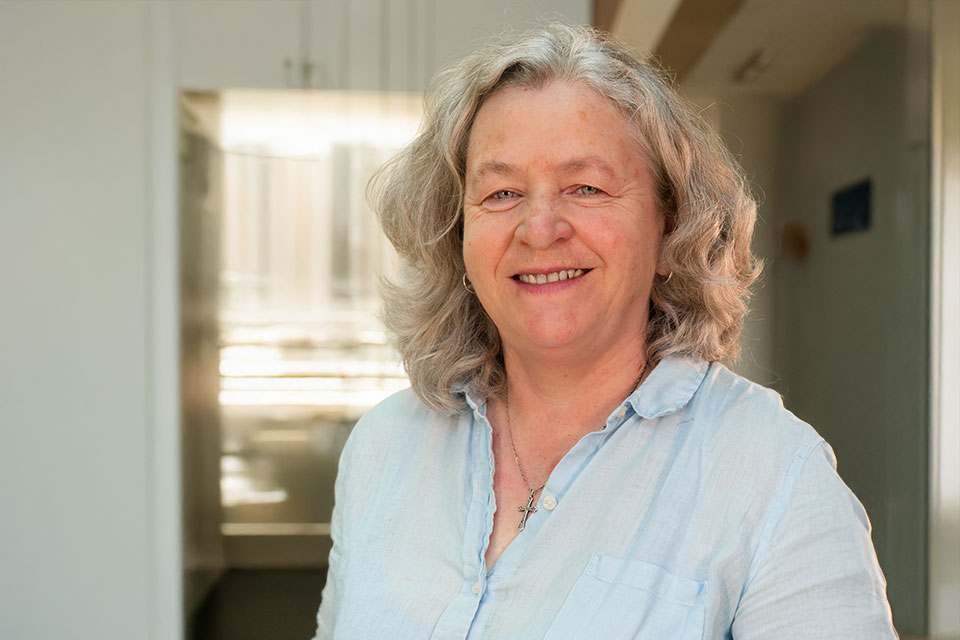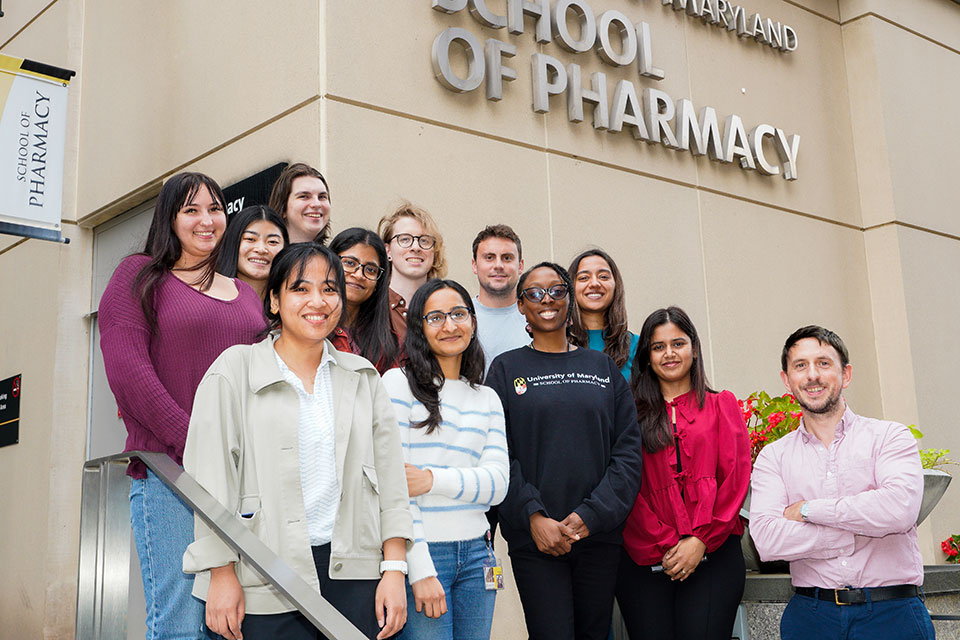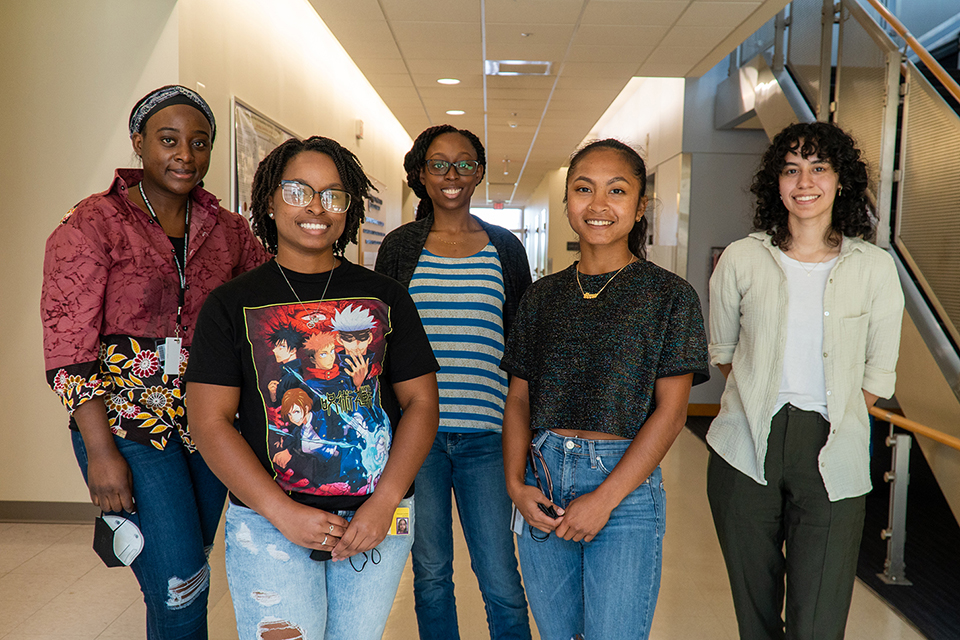UMSOP’s Wilks Awarded $2.63 Million from NIH to Advance Research on Antibiotic-Resistant Infections
Study will explore how an antibiotic-resistant bacterium survives in the body and how that knowledge could lead to new, more effective treatments.

By Pam Carder
September 23, 2025
Angela Wilks, PhD, Isaac E. Emerson Chair of Pharmaceutical Sciences and co-director of the Metallotherapeutics Research Center at the University of Maryland School of Pharmacy (UMSOP), has been awarded a five-year, $2.63 million R01 grant from the National Institutes of Health (NIH) to continue her pioneering work on bacterial iron acquisition and its role in chronic infection.
The multi-year grant will support Wilks’ efforts to investigate how Pseudomonas aeruginosa, an antibiotic-resistant bacterium identified by the Centers for Disease Control and Prevention as a serious threat to public health, adapts to the nutrient-limited environment of the human body during infection. Her research zeroes in on a key survival mechanism: the bacterium’s ability to switch from using freely available iron sources to scavenging iron from heme, a molecule found in blood.
“We’ve spent over two decades unraveling how pathogens adapt to nutritional stress within the host, particularly iron deprivation,” says Wilks. “This grant will allow us to dive deeper into the molecular signals and regulatory networks that drive this adaptation and ultimately help us identify new drug targets to combat chronic bacterial infections more effectively.”
Understanding a Critical Pathogen’s Playbook
While most bacteria rely on common iron uptake systems to grow and survive, Pseudomonas aeruginosa has evolved sophisticated tools to access heme-bound iron, especially during prolonged infection, such as in the lungs of patients with cystic fibrosis or in wounds. Wilks’ research focuses on two key heme acquisition systems in the bacterium, Has and Phu, which are essential for sensing, capturing, and utilizing heme as an iron source.
Recent findings from the Wilks lab have shown that a heme metabolite, biliverdin IXβ (BVIXβ), acts not only as a breakdown product but also as a regulatory molecule, influencing bacterial motility and biofilm formation, both of which are critical for chronic infection. The lab also identified a transcriptional regulator, BdrB, that links heme metabolism to changes in bacterial behavior, such as transitioning from free-floating (planktonic) to surface-attached (sessile) communities.
The new research supported by the R01 grant will focus on:
- Mapping how BVIXβ controls gene expression at the post-transcriptional level;
- Clarifying the role of BdrB in the transition to biofilm formation;
- Identifying upstream regulatory elements that control this network of genes.
Toward Novel Antibiotic Targets
By understanding these iron-dependent adaptations, Wilks and her team hope to identify proteins and pathways that are essential for infection but not for bacterial survival outside the host. This could lead to the development of therapeutics that are more selective, and less likely to foster antibiotic resistance.
“This work represents a critical step in developing next-generation antimicrobials,” says Hongbing Wang, PhD, professor and interim chair of the Department of Pharmaceutical Sciences. “Dr. Wilks’ research offers the potential to disrupt key pathogenic bacterial survival strategies without harming the beneficial bacteria in our microbiome.”
A Collaborative Effort with Broad Impact
The project builds on close collaborations with Maureen Kane, PhD, professor of PSC and director of UMSOP’s Mass Spectrometry Center, who provides expertise in proteomics and metabolomics, and Fengtian Xue, PhD, professor of PSC and associate dean for research, whose work has led to the development of lead compounds targeting bacterial iron uptake. Previous findings from this line of research also contributed to the creation of Galeo Therapeutics, a start-up co-founded by Wilks and supported by an NIH UM-BILD award.
The long-term implications of this research are significant – not just in the fight against P. aeruginosa, but across a wide range of infections caused by antibiotic-resistant pathogens.
“We are working toward antibiotic strategies that target what bacteria need to survive in the host – pathways that aren’t shared by harmless or beneficial bacteria,” adds Wilks. “That’s the future of precision antimicrobial therapy.”



